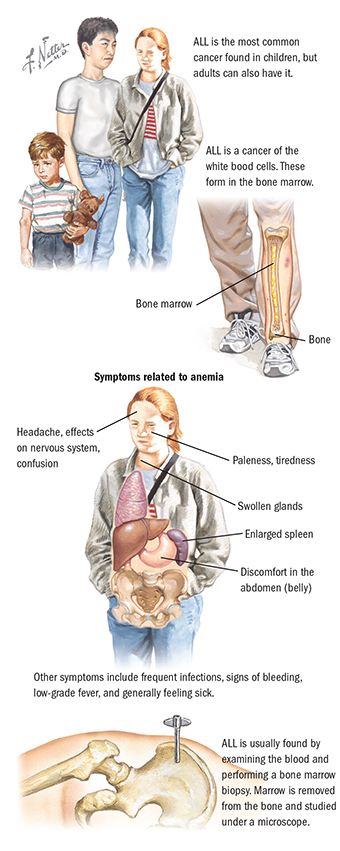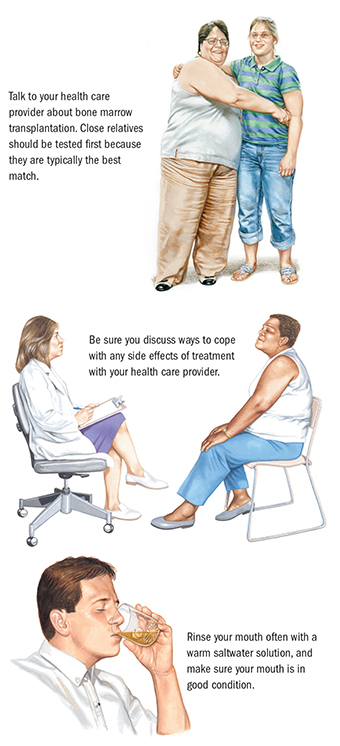
Leukemia is a cancer of the white blood cells known as lymphocytes. Bone marrow is spongy tissue in the middle of bones. White blood cells form and develop in marrow and then move into the bloodstream. Leukemia can be divided into acute and chronic types. Acute leukemia affects cells in bone marrow before they fully develop. Chronic leukemia affects fully grown cells. The four subcategories are acute lymphocytic leukemia (ALL), acute myelogenous leukemia (AML), chronic lymphocytic leukemia (CLL), and chronic myelogenous leukemia (CML).
ALL prevents the body from making normal blood cells and causes production of abnormal young, immature white blood cells. Normal white blood cells help fight infection, whereas leukemic cells are ineffective. ALL cells come from white blood cells called B cells or T cells. ALL usually occurs in children, especially boys, younger than 15. It is the most common cancer in children. Adults can also have ALL.
The cause is unknown, and ALL can’t be prevented.
Symptoms include low fever, tiredness, increasing paleness, feeling sick, easy bruising and bleeding, enlarged spleen, pain in the belly (abdomen), frequent infections, and headache. Swollen glands, enlarged liver and spleen, and confusion can occur.
The doctor examines the blood and performs a bone marrow biopsy. The biopsy involves removing marrow from bone and examining it under a microscope. Lymphocytic cells are examined for the presence of abnormalities to their chromosomes (cytogenetic analysis). The health care provider will also check to see whether B or T cells are involved (immunophenotyping). The health care provider also tests spinal fluid and may order a chest x-ray, CT (computed tomography) scan, and ultrasound.

ALL can be cured; chemotherapy (anticancer drugs) is the main reason for better survival. At first, hospitalization is needed for blood transfusions, chemotherapy, and radiation.
Treatment usually involves four steps. The first two (using drugs for induction and consolidation) also remove normal blood cells, which can lead to serious complications.
After complete remission, the third step is radiation of the brain and chemotherapy, to get rid of leukemia cells.
Maintenance therapy uses drugs to prevent return of leukemia.
The health care provider may consider bone marrow transplantation, also called stem cell transplantation. Healthy marrow containing stem cells (the source of all blood cells) is given, and stem cells produce new healthy cells to replace abnormal ones.
Contact the following sources:
Copyright © 2016 by Saunders, an imprint of Elsevier, Inc.
Ferri’s Netter Patient Advisor